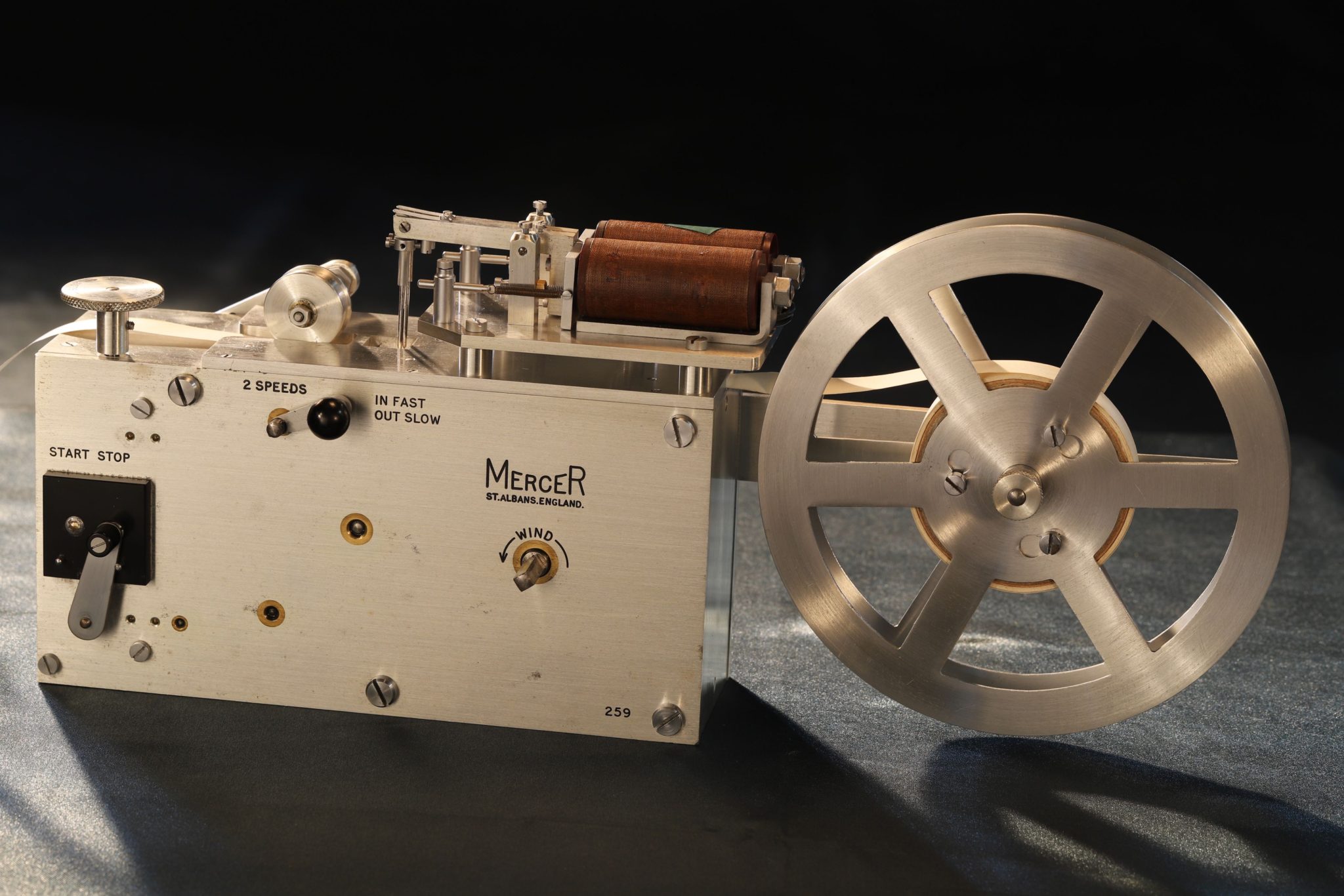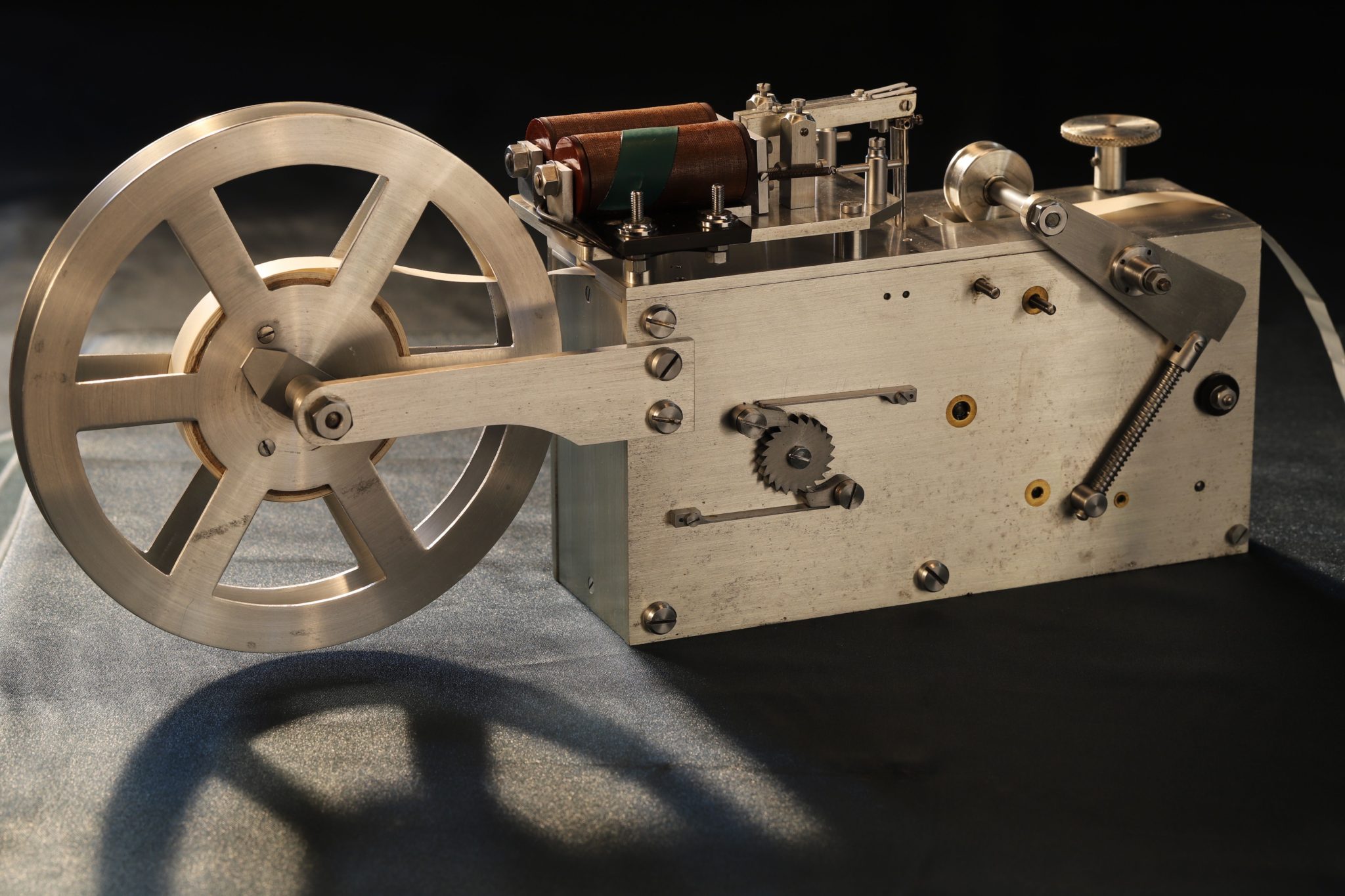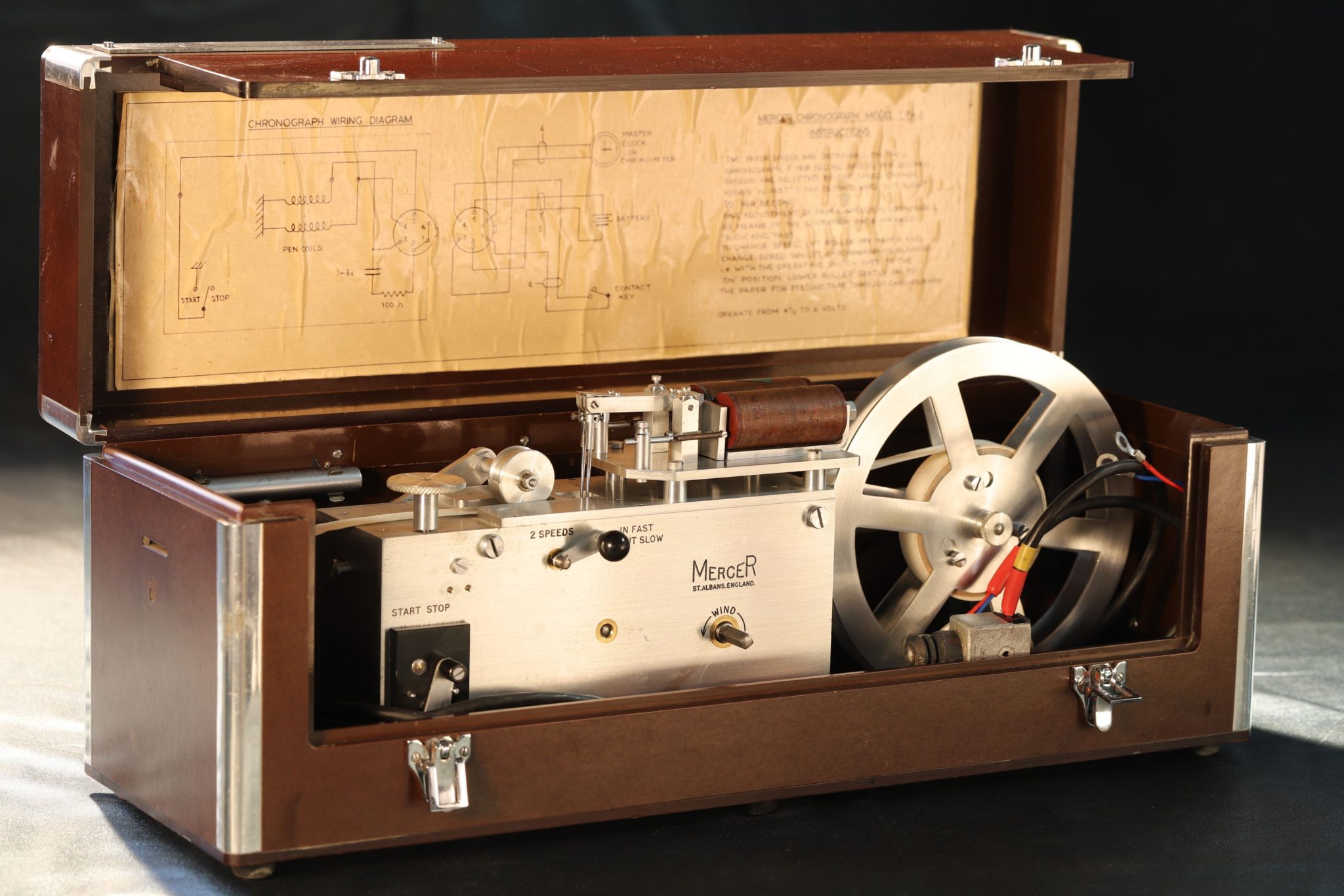Tape chronograph principally constructed in aluminium and brass, with substantial clockwork motor having two speed gearbox, electro-mechanical stop and start, speed control, roller driven tape transport with pinch roller, twin solenoid markers, time code and event. Tape feed from external spool.
All contained within a bakelite swing top case constructed with bright polished aluminium bracing, plated over centre catches and maker’s ID plate to front. Circuit diagram to lid inside, internal mounting points for tools and winding key, end mounted Bulgin six-pin socket with connections to solenoids and time code operation. Connection loom with six-pin Bulgin plug feeding into three cables, contact key, master chronometer and battery.
Operation
Essentially, this is a highly accurate event timer designed to operate in tandem with a Mercer chronometer fitted with single or multiple electrical contacts. The basic principle is that a paper tape similar to a ticker tape is moved beneath two solenoids, electro-mechanical devices which cause needles to move up and down, imparting small punched marks along the outer sides of the tape. The tape had previously been marked by using inked pens – these were replaced because of the failure in ink flow caused by temperature and humidity, and even insects. The needles are designed to articulate at the top, allowing for the movement of transported tape whilst the hole is being made.
One set of punched marks will be the time code, created by the making of electrical contacts within the master chronometer, usually timed on the second, but the duration may be longer depending upon the application.
The other set of punched marks created along the opposing outer side of the tape will be created on the making of the contact key or an amplified radio beacon signal. Thus the ‘event’ time maybe very accurately recorded, the distance between the time code marks on the second broken to 1/100ths of a second. The contact key itself was developed over time and the specification had to be changed with the introduction of needle markers.
The applications for this type of timing device were many, ranging from the establishment of the longitude of landmarks, Admiralty oceanographic survey work, and air, water and land speed records, to ballistic analysis.
Dimensions:
Stock No: SI0943
Price: Vavasseur Archive - not currently for sale


